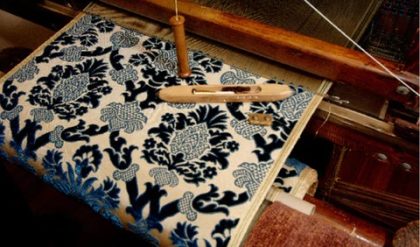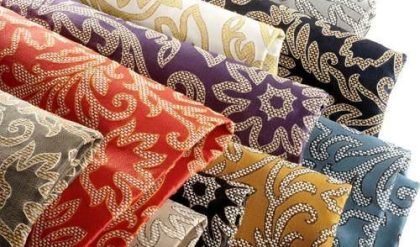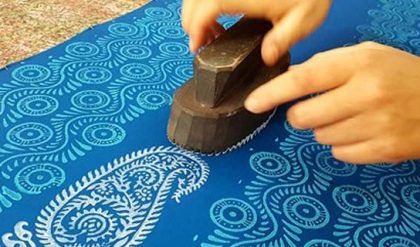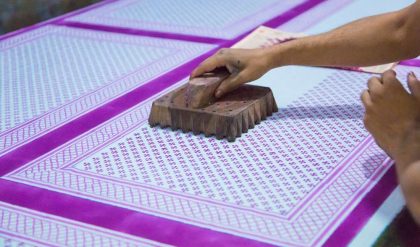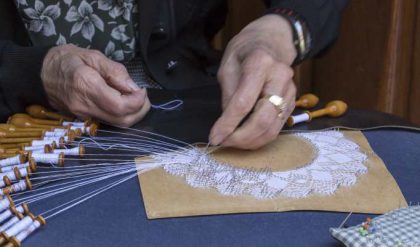The colour mixture theory of woven fabric has to be established based on the employment of the limited colours of warp and weft threads. Among primary colour theories, the digital primary colour modes, both RGB and CMYK, can provide available references to the colour design because there is no existing colour mixture theory available specifi cally for designing digital jacquard fabric under layer-combination design mode.
When designing simulative fabric, the CMYK digital colour mode, based on subtractive colour mixture theory and used for output of digital images, seems the optimal choice. Since the colour mixing of woven fabric is subject to optical colour mixture theory, research into the differences between subtractive and optical colour mixture is thus the key for digital jacquard fabric colour to reproduce accurate colour effects of digital images. Figure 5.4 shows the mixed colour effect of two contrasting colours with the same area and lightness.
The resultant mixed colour, under subtractive colour mixture, results in black with the same area, in theory. Under optical colour mixture theory, however, the mixed colour effect is dark grey and the mixed area is the sum of the two original areas. For this reason, the colour mixing of digital jacquard fabric interlaced with warp and weft threads is a spatial colour mixture with no superimposition. The main characteristic of this kind of colour mixture is that, after colour mixing, the luminosity is invariable but the mixed area is increased. Therefore, colour saturation is reduced when mixing colour with warp and weft threads. Further, the available range of

colour saturation and the scope of brightness of the mixed colours are both reduced.
With reference to the colour mixture theory stated earlier, when designing digital jacquard fabric in the layered-combination design mode, the resulting compound structure of jacquard fabric is capable of expressing millions of mixed colours based on its compound structure. If applying a non-backed compound structure, fi ne colour shading effects can be produced. However, the colour mixing of digital jacquard fabric formed by the deployment of warp and weft threads is different from that of RGB additive colour mixture, or of CMYK subtractive colour mixture.
It is based on a 3-D woven structure that brings about a distinctive quality for digital jacquard fabrics and, therefore, the colour mixing of digital jacquard fabrics features the perfect integration of textile materials and woven fabric structures that cannot be imitated by other means of artwork. Similarly, the simulation design of digital jacquard fabric can produce only a similar, but not an exact, copy of the same colour effect, of the original digital images.
